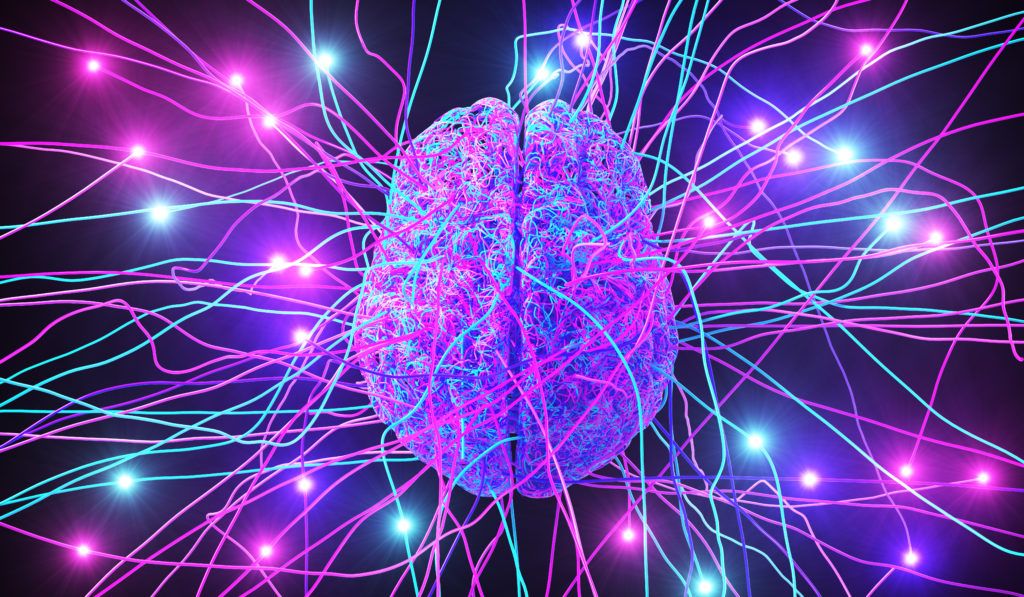
Psychedelic Medicine: Drugs to Treat Drug Addiction?
For the millions of people suffering from substance use disorders (SUDs), compulsive use of alcohol or other drugs leads to adverse psychosocial and health outcomes.1 Their drug-seeking behavior persists despite terrible consequences, and abstinence from the drug of choice causes an extremely aversive and sometimes dangerous withdrawal period accompanied by intense drug craving.1,2 This cycle of behavior is self-destructive, chronic, and very difficult to interrupt; thus, relapse to drug use is extremely common in people with SUDs. Current treatment options for patients with SUDs are limited and vary depending on the drug of choice, but there is an urgent need for better medications and psychotherapeutic regimens to help people with these disorders.1-4
Animal models of drug addiction have provided critical insights into the neural pathways involved in the development of addictive behavior. The “reward circuitry” of the brain includes dopamine neurons that project from the ventral tegmental area (VTA) to the nucleus accumbens, and addictive drugs typically increase the release of dopamine in this circuit.1-4 Similarly, when rats are surgically implanted with an electrode in their brains that allows them to stimulate the dopaminergic fibers from the VTA, they will avidly press a lever to stimulate this circuit with electrical impulses.5 This model of reward-seeking behavior is called intracranial self-stimulation (ICSS). Addictive drugs classically increase ICSS behavior, since they amplify the release of dopamine from VTA fibers, which ultimately augments the rewarding sensation of ICSS.5
Findings from clinical studies in people with SUDs as well as preclinical experiments in rodent models of addiction suggest that psychedelic drugs may reduce drug-seeking behavior.1-4,6-8 Psychedelics can be categorized chemically as tryptamines (e.g. LSD and psilocybin) and phenethylamines (e.g. mescaline and DOI), and commonly activate the serotonin 5-HT2A receptor.9 The 5-HT2A receptor is the major drug target implicated in the anti-addictive effects of psychedelic drugs, but the precise mechanisms by which psychedelics reduce behaviors associated with drug use remains largely unknown.1,10 Future studies in both humans and animals will help reveal how psychedelics affect adaptations in the reward circuitry associated with SUDs.
Whether the subjective experience of the “trip” is required for the anti-addictive effects of psychedelics is another important question, and answers may come from rodent models of psychedelic drug effects. Although it is impossible to assess the conscious state of a rodent by self-report measures, hallucinogenic drug effects are highly associated with a stereotypical head-twitch response (HTR) in mice.12 In healthy participants, pharmacological blockade of the 5-HT2A receptor eliminates the subjective effects of psychedelics.11 Similarly, pharmacological blockade of the 5-HT2A receptor eliminates psychedelic-induced HTRs in rodents.12
Rodent Models: Twitchin’ and Addiction
Mounting evidence from studies conducted in humans and rodents shows that psychedelic drugs, which activate serotonergic 5-HT2A receptors as well as other targets, reduce behaviors associated with addiction.1-8,12-14 In the ICSS rodent model of reward-seeking behavior, LSD, mescaline, and psilocybin reduce lever-pressing behavior that electrically stimulates the reward circuit.14 This disruptive effect of psychedelics on ICSS behavior stands in stark contrast to the effects of addictive drugs like cocaine and alcohol, which increase ICSS behavior by facilitating the release of dopamine in the reward circuit and reinforcing ICSS behavior.5
Although activation of 5-HT2A receptors is clearly required for initiating rodent HTR (a proxy of hallucinogenic effects), the role of the 5-HT2A receptor in suppression of ICSS behavior has not been well established.12 In this study, Jaster and colleagues investigated whether 5-HT2A receptor activation was required for HTR elicited by the phenethylamine DOI and the tryptamine LSD in mice. More notably, the authors measured the effects of mescaline, DOI, LSD, and psilocybin with or without blockade of 5-HT2A receptors on reward-seeking behavior in the ICSS test in rats.15
The Trip Report
Jaster and colleagues assessed the effects of psychedelics from different structural classes on HTR and ICSS behavior in rodents, as well the effects of co-administering these compounds with selective antagonists of 5-HT2A receptors.15 The major experimental findings from this study were that:
- The phenethylamine psychedelic DOI increases HTR in mice and reduces ICSS in rats, and both of these effects were blocked by the 5-HT2A antagonist volinanserin.
- The tryptamine psychedelic LSD increases HTR in mice and reduces ICSS in rats, and the effects of LSD on HTR, but not ICSS, were blocked by the 5-HT2A antagonist volinanserin.
- The phenethylamine psychedelic mescaline reduced ICSS behavior in rats, and this anti-addictive effect was blocked by the 5-HT2A antagonist volinanserin.
- The tryptamine psychedelic psilocybin also exhibited anti-addictive effects in ICSS in rats, but these anti-addictive effects were only partially reduced by the 5-HT2A antagonist volinanserin.
Beyond the Bench: Implications for Psychedelic Therapy for SUDs
The evidence presented by Jaster and colleagues supports previous findings that 5-HT2A receptors mediate HTRs in mice and psychedelics potently reduce ICSS behavior in rats, suggesting broad anti-addictive potential for this class of drugs.12,14,15 Interestingly, the inability of 5-HT2A receptor blockade to fully suppress the anti-addictive effects of the tryptamine psychedelics LSD and psilocybin suggest that the hallucinogenic effects of these classical psychedelics may be separable from their anti-addictive effects, at least in the context of the ICSS model of addiction behavior.
However, the disruptive effect of psychedelics on ICSS should be interpreted with some degree of caution. Drugs may reduce behavioral responding in this task nonspecifically by causing sedation, lapses in attention, locomotor abnormalities, or anxiety.16 Additional animal experiments that use more sensitive measures of addiction behavior, such as conditioned place preference, self-administration, or reinstatement of drug seeking behavior after withdrawal are warranted. These may help to clarify the aspects of addiction that psychedelics can effectively treat, since drug-seeking, drug-liking, and withdrawal symptom severity are all separable dimensions of addiction behavior with relevance to distinct aspects of human SUDs.17
Due to the intensity and long duration of psychedelic experiences, it may be desirable to design non-hallucinogenic analogs of the tryptamine psychedelics for treating people with SUDs.1 Moreover, this fascinating discovery implicates drug targets other than the 5-HT2A receptor in anti-addictive properties of tryptamines, which should certainly be explored further and considered during the process of rational drug design for the treatment of SUDs.1,13

Thank you very much for sharing this info! I really appreciate.
Hugs and healing!????
my pleasure!